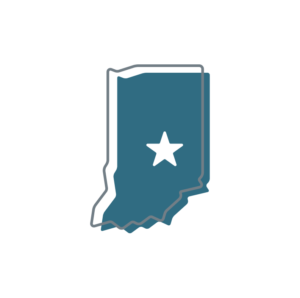House Bill 1001 funded the state’s On My Way Pre-K program and a variety of early care and learning activities, including $147M in new “hold harmless” funding to ensure continuity for families currently receiving CCDF vouchers. Representing a relatively large increase in state funding, the hold harmless funding will allow all current recipients of CCDF vouchers to maintain their awards. Expansion of the program in the state had been funded through American Rescue Plan dollars and there was no longer term plan for sustainability. Potentially 30,000 kids were at risk of losing CCDF absent this investment. There was significant advocacy in the state for this measure. Advocates estimated that roughly 30,000 vouchers could be at risk if the state did not make some additional investment, so they developed grassroots messaging, worked closely with partners to deploy data on the capacity that was potentially at risk if funding wasn’t forthcoming, and held a Child Care Day at the Statehouse event to raise awareness of the issue for legislators.
Senate Bill 463 included an extension of a tax credit for businesses that want to open on-site or near-site child care facility for the children of their employees. The tax credit is extended through 2027.
House Bill 1427 included two new property tax exemptions relating to child care. The first is a partial property tax exemption for the property of a business that uses some of its space for an on-site child care facility. The second is a property tax exemption for for-profit child care centers to mirror the one available to nonprofit operators.
Indiana’s governor issued an executive order expanding paid family leave for state employees who have new children, adopt a new child, or who need time off for recovery after a birth or miscarriage. The executive order expands a popular paid leave program for state employees to include up to 150 hours of paid leave for full time and 75 hours of paid leave for part time employees.
House Bill 1253 included language calling for the creation of a multi-site licensure category for child care providers. The proposal in HB 1253 will allow child care providers that operate more than one location to have a streamlined licensure process but which, crucially, will still allow for individual site-level inspection and enforcement. This bill should allow providers an easier pathway to expansion while not sacrificing the state’s critical role in oversight.
Advocates also successfully defended child care ratios in Indiana. The final version of Senate Bill 463 included language that ties Indiana’s child/staff ratio and maximum group sizes for child care to the average ratios and group sizes of surrounding states and requires the state to re-set the ratios and group sizes each calendar year. The bill’s ratio/group size language, as originally introduced, would have tied the state’s ratios/group sizes to the least restrictive of its neighboring states, rather than the average. Advocates worked to highlight the dangers of changing ratios and provided data to show the correlation between rates of injury/death and relatively lax ratios/group sizes. Advocates worked closely with female legislators in both parties who had concerns with changing the ratios. The final language, in effect, preserves current requirements.






















